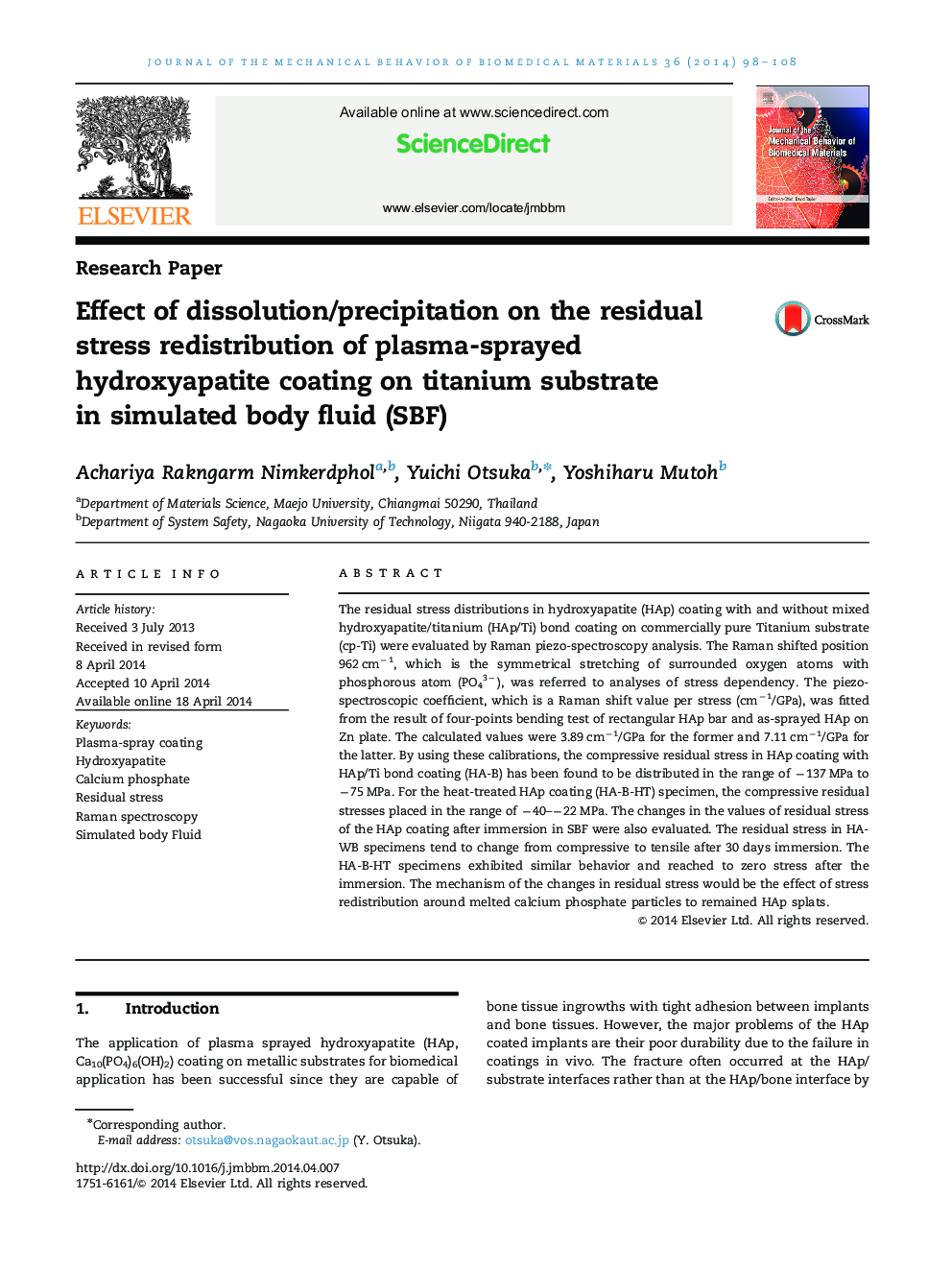| Article ID | Journal | Published Year | Pages | File Type |
|---|---|---|---|---|
| 7208859 | Journal of the Mechanical Behavior of Biomedical Materials | 2014 | 11 Pages |
Abstract
The residual stress distributions in hydroxyapatite (HAp) coating with and without mixed hydroxyapatite/titanium (HAp/Ti) bond coating on commercially pure Titanium substrate (cp-Ti) were evaluated by Raman piezo-spectroscopy analysis. The Raman shifted position 962Â cmâ1, which is the symmetrical stretching of surrounded oxygen atoms with phosphorous atom (PO43â), was referred to analyses of stress dependency. The piezo-spectroscopic coefficient, which is a Raman shift value per stress (cmâ1/GPa), was fitted from the result of four-points bending test of rectangular HAp bar and as-sprayed HAp on Zn plate. The calculated values were 3.89Â cmâ1/GPa for the former and 7.11Â cmâ1/GPa for the latter. By using these calibrations, the compressive residual stress in HAp coating with HAp/Ti bond coating (HA-B) has been found to be distributed in the range of â137Â MPa to â75Â MPa. For the heat-treated HAp coating (HA-B-HT) specimen, the compressive residual stresses placed in the range of â40-â22Â MPa. The changes in the values of residual stress of the HAp coating after immersion in SBF were also evaluated. The residual stress in HA-WB specimens tend to change from compressive to tensile after 30 days immersion. The HA-B-HT specimens exhibited similar behavior and reached to zero stress after the immersion. The mechanism of the changes in residual stress would be the effect of stress redistribution around melted calcium phosphate particles to remained HAp splats.
Keywords
Related Topics
Physical Sciences and Engineering
Engineering
Biomedical Engineering
Authors
Achariya Rakngarm Nimkerdphol, Yuichi Otsuka, Yoshiharu Mutoh,
